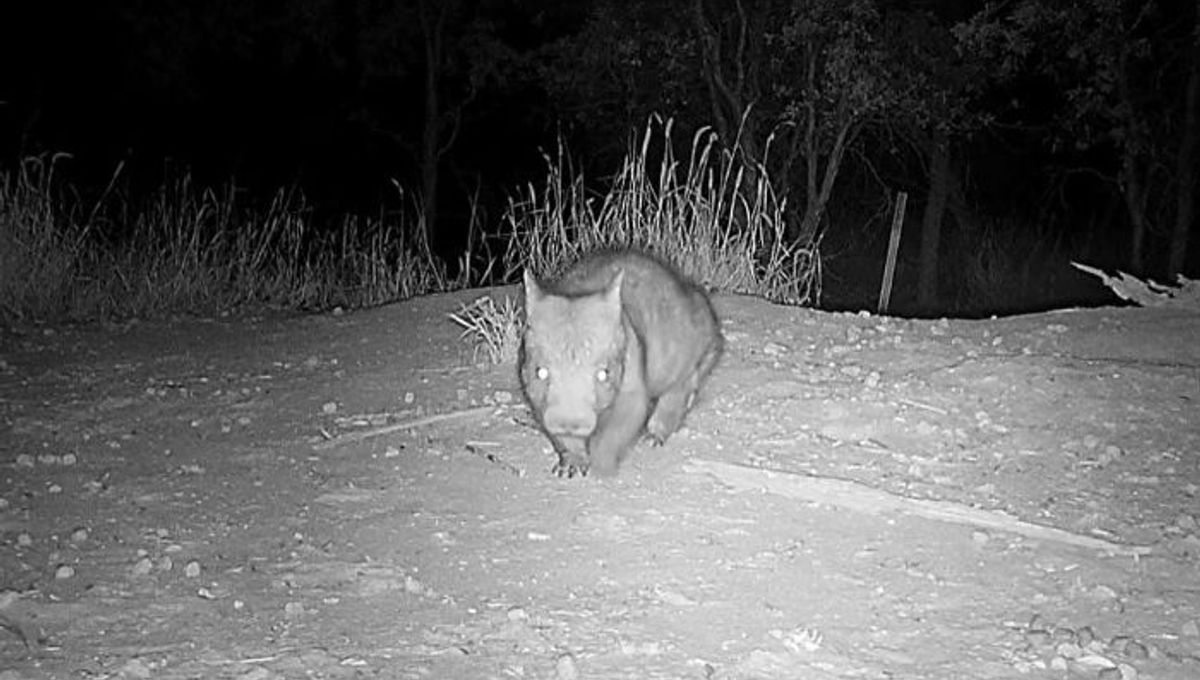
It’s not every day you see a northern hairy-nosed wombat, so ecologists were blown away to capture footage of a young member of the critically endangered species stumbling around an Australian wildlife refuge.
The baby northern hairy-nosed wombat was recently spotted by researchers at the Australian Wildlife Conservancy (AWC) while scrolling through 100 hours of motion-sensor footage captured in the Richard Underwood Nature Refuge (RUNR) of southwest Queensland.
There are only three remaining populations of the wombats: one here at the RUNR site, another in Epping Forest National Park (Scientific), and a newly introduced population at Powrunna State Forest. With an estimated 400 individuals remaining, the species is considered one of Australia’s rarest mammals.
The new video, however, shows that the super-rare wombats are breeding in the refuge, offering new hope for their survival.
“It’s very gratifying to know that one of the world’s most critically endangered animals is doing well and breeding within the safety of the fenced area. Although this isn’t the first joey born at the refuge, it is the first juvenile spotted for a few years,” Andy Howe, Senior Field Ecologist at AWC, said in a statement.
“The wombat is quite robust indicating that it is feeding well and getting enough nutrition. Overall, this bit of footage tells us a lot about the state of the RUNR population, showing us that the wombats have the right conditions and feel comfortable enough to breed,” he added.
Northern hairy-nosed wombats (Lasiorhinus krefftii) are the largest of the three Aussie wombat species, growing to 1 meter (3.3 feet) in length and weighing up to 30 kilograms (66 pounds).
They’re native to Australia’s eucalypt woodland, much of which was stripped in the 19th and 20th centuries to make way for farmland. The wombats were also actively hunted by European colonizers as they considered them a pest, much like the now-extinct Tasmanian tiger.
By the 1980s there was a single population of just 35 individuals in a small pocket of Epping Forest. In a last-ditch attempt to save the species, the park set up a 20-kilometer (12.4-mile) fence around their habitat to keep out dingoes and other predators.
With a bit of hard work, the species is slowly but surely recovering. As of 2024, there are several hundred individuals living in Australia. Nevertheless, their future is still not secured.
The AWC has recently received a $384,000 (around $259,000 USD) grant that they’re using for a Northern Hairy-nosed Wombat Recovery Action Plan, a multi-pronged project that involves a fire management strategy and a push to improve food resources by preventing large feral herbivores from invading their territory. They’re also collaborating with the University of Adelaide to study the DNA of the animals by collecting and analyzing wombat hair from burrow entrances.
“Government funding enables AWC and its partners to improve the trajectory of the species by reducing key threats, commencing a genetic management plan and increasing data knowledge – all of which will support a growing and sustainable population at RUNR and hopefully, assist with the establishment of future populations,” explained Howe.
Source Link: A Baby Of One Of Australia's Rarest Mammals Spotted Snooping In Rare Footage